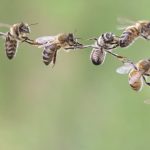How reducing local poverty is helping protect Nepal’s tigers
Conservation and development don’t have to be at odds with each other. Dermot O’Gorman, CEO of WWF-Australia, provides Nepal as an example of how protecting wildlife can be a step forward in addressing poverty.
Last year I travelled to Nepal in search of an endangered tiger. Although I didn’t get to see one, I did get to see first-hand how poverty reduction and community action can help conserve these threatened, magnificent creatures.
While some may assume that conservation and development are at odds with each other, this is certainly not always the case.
Take Nepal for instance. It is a beautiful country where locals are increasingly working to achieve lasting conservation goals, including the protection of tigers.
It may seem contradictory in some instances. After all, why would local communities want to help conserve tigers, which can be a threat to both people and livestock?
WWF-Nepal has been facing this challenge for the past 30 years and has discovered that the answer lies in the integration of conservation with community development and livelihood improvement.
Here’s what I learnt when I went to visit the Terai Arc Landscape Project (TAL), a national government initiative that WWF has supported for the past decade.
Spanning from the Bagmati River in the east to the Yamuna River in the west, the Himalayan foothills of the Terai are home to endangered tigers and rhinos. It’s an incredibly diverse region and also shelters 500 species of bird, reptiles and fish; plus elephants, swamp deer, blue bull and bison, and over 2,000 flowering plants.
There are also more than seven million people living in the Terai, with approximately 50 percent living below the poverty line of $2 per day. The average income is around NR7000 (about AUD77) per year and people are very dependent on their local environment for food, water and energy needs.
It is here that conservation and livelihoods go hand in hand. An example of this is the introduction of ‘mentha’ or mint farming by the Terai Arc Landscape Program. It has become popular amongst locals because not only does it increase a farmer’s income; it’s unpalatable for wildlife and acts as a ‘biofence’.
We’re now seeing hundreds of examples of how conserving species like the tiger and rhino have local, national and global benefits.
Locally, species conservation is improving local livelihoods within this unique landscape. Take Chitwan National Park for instance. It has 22 buffer zones, areas in and around national parks and wildlife reserves, created to support the sustainable management of natural resources. Within these buffer zones are local community bodies that carry out conservation and development activities.
Each year, these 22 buffer zones collectively receive around four crore rupees (AUD$250,000) from park fees. This money is used to support sustainable activities, while, in some areas, direct income from tourism brings in an additional USD$125,000 p.a. to local businesses. Around 30-50% of the fees tourists pay is also given back to help households living in the buffer zone of the national park.
Together, this income makes the business of conservation very important to reducing poverty in Nepal, debunking the old myth that conservation and community are always at odds.
On my trip, I also met with Anti-Poaching Conservation Committee members in Mirgakunj and I learnt how important it is to listen to the locals’ needs and provide them with education on various issues, ranging from avoiding toxic pesticides to wildlife poaching.
Undoubtedly, there are costs to the local communities. Human wildlife conflict is very real and can lead to the damage of crops and property – and in rare cases, even the loss of life. The national park and buffer zone committees are working hard to reduce conflict by installing fences, lights, trenches and other mechanisms to keep wildlife and agriculture separated.
It’s clear from speaking to people on the ground though – they understand the benefits of conservation. Protecting wildlife provides opportunities to lift them and their families out of poverty. Better management of natural resources like forests, supports their rights to look after these resources.
It may not be easy and there will always be differing views, but the efforts of community conservation in Nepal are a clear step forward in addressing poverty. From seeing some of this first hand, it was obvious to me that Chitwan National Park is a micro example of the thinking that needs to happen at national, regional and global levels as we explore what makes an effective green economy.
And here in Australia, we can learn from the experiences in Nepal, as we continue to work with the Australian Agency for International Development (AusAID) to help improve environment management and livelihoods throughout the Asia Pacific region.
Because, as we share and learn from our experiences, I have no doubt that we will continue to see how conservation can successfully integrate with poverty reduction and community wellbeing.
Dermot O’Gorman is Chief Executive Officer of WWF-Australia. Since becoming CEO in 2010, he has steered WWF-Australia in developing a new strategy, focused on six high impact initiatives in Australia and the region. He also led the organisation through recent big conservation wins, including WWF’s contribution to carbon price laws and plans for a national network of marine parks. Dermot’s passion lies in the big picture of conservation, actively working with businesses, international development agencies, NGOs and community groups towards a planet where humans live in harmony with nature. Dermot has worked for over two decades in sustainable development in Australia, Pacific, Asia, Europe and China and has an MBA (IMD-Switzerland) and a Masters of Science (London School of Economics).













